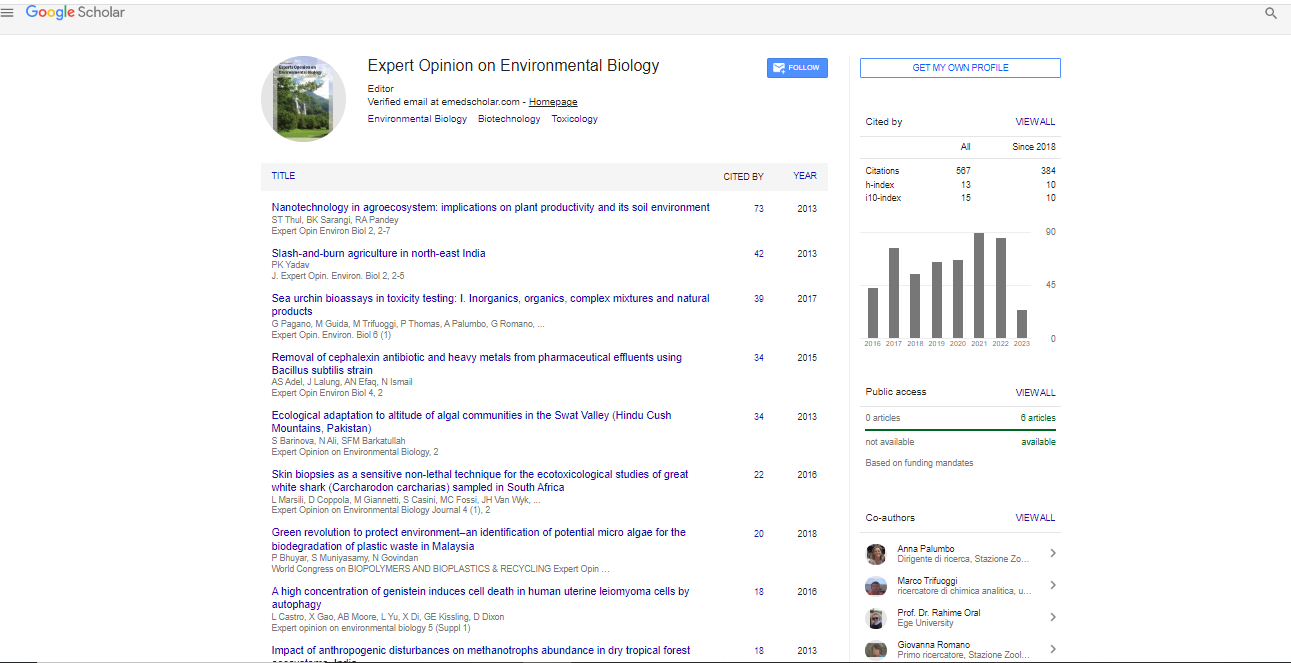People centric early warning systems: Emerging tools in environmental governance
Khairulmaini O S and Fauza A G
University of Malaya, Malaysia
: Expert Opin Environ Biol
Abstract
There is a general misconception based on its implementation that defines an Early Warning System (EWS) to be only on its detection technology component. EWS should not only incorporate detection, measurement, analysis and presentation of results, which are usually technology driven but an EWS must be more comprehensive and integrative in its functional mechanisms which it should not only include the detection technology component but it should incorporate the attributes of a complete system within which exists also mechanisms for information dissemination, awareness and interpretations, reactions and development, monitoring, anticipation and preparation, and a continual need for self appraisal and learning, towards achieving operations efficiency in the future. EWS is relevant for both population-centric and systems-centric entities that are been threatened by external and internal stresses. The last decade, Malaysia had experienced an increased number of environmental disasters as a result of floods, slope failures and from the impact of ecological manifestations such as dengue fever and the swine flu. In relation to these disasters the threat of environmental hazards which in most cases are climate change driven are making the Malaysian society and its various economic activities highly at risks to potential disasters. This paper discusses the need to reevaluate EWS as a major tool in reducing risks and increasing resilience of populationcentric and systems-centric entities to potential disasters. The paper examines the use of EWS in three diverse case studies of environmental disaster events experienced in Peninsular Malaysia that are gaining in importance and significant in the last decade. These disasters are increasing in frequency and intensity and are attributed to a changing climate regime which induces floods, slope failures and storm surges. In each case study, there is an EWS in place but the use of the EWS focuses more on the detection technology component but do not show a system which is complete and integrative in its implementation. The study shows that in order for EWS to function as a complete and integrative system it needs different interconnecting levels of functions or functional mechanisms, which are performed by different stakeholder which can be technology driven or in certain cases the use of technology is kept at a minimum. The study concludes that EWS are important mechanisms in climate change induced hazards management that adopts the precautionary approach but it needs to be implemented based on the comprehensive function system mentioned earlier. The study also finds out that the EWS structure could be modulated into two components, a generic component which is needed for all forms of hazards and a specific component, which is specific to a particular hazard. The EWS is self learning and through time should achieve effectiveness in operations.
Biography
Email: khairulo@um.edu.my
 Spanish
Spanish  Chinese
Chinese  Russian
Russian  German
German  French
French  Japanese
Japanese  Portuguese
Portuguese  Hindi
Hindi 
